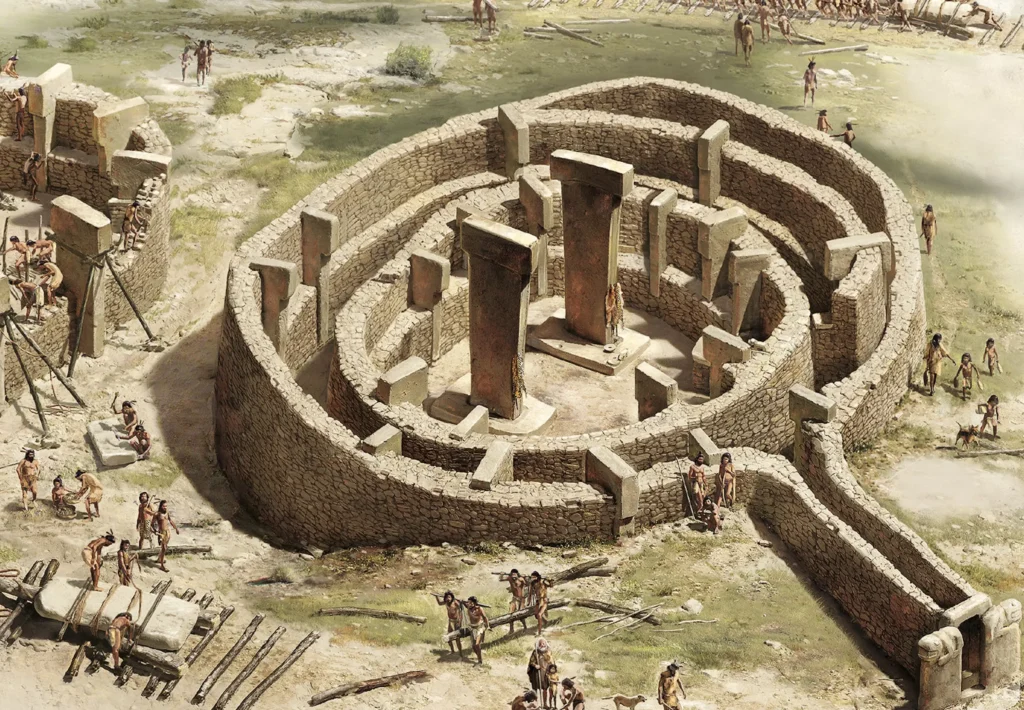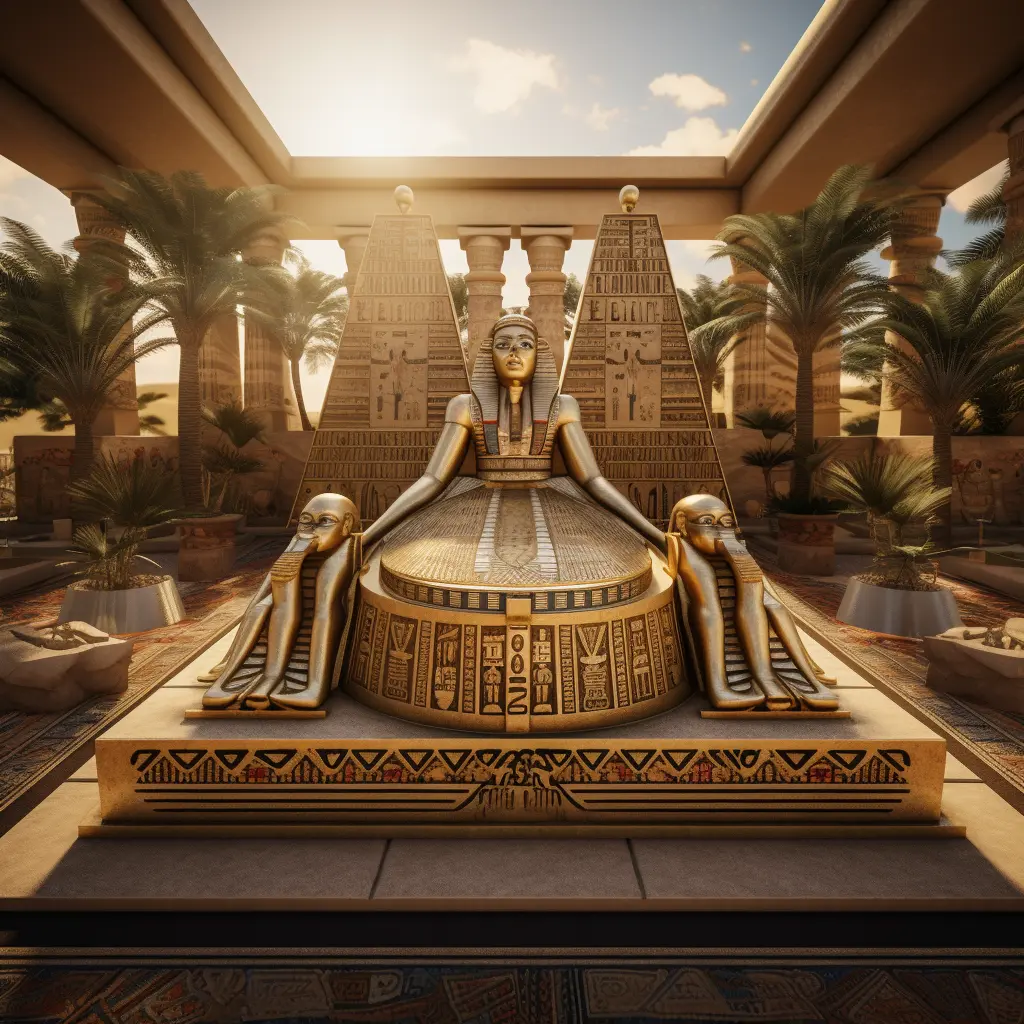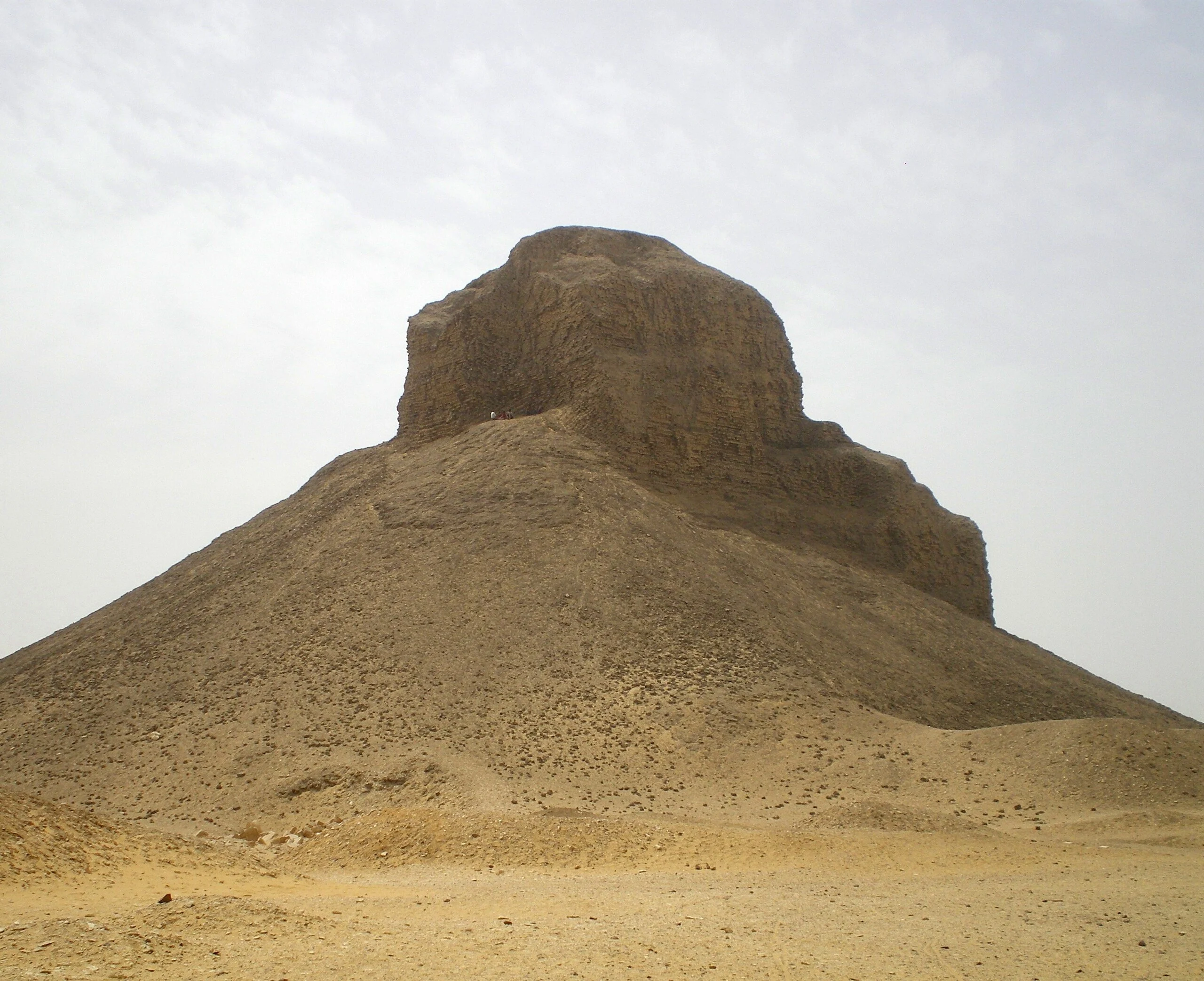
- Setting the Scene
- Importance of the Subject
- Discovering Göbekli Tepe
- The Mysterious Builders of Göbekli Tepe
- The Architectural Marvel of Göbekli Tepe
- Religious and Ritualistic Significance
- Astronomical Observations
- Theory of Hunter-Gatherers
- Alien Theory
- Influence on our Understanding of Early Civilizations
- Evolution of Interpretations Over Time
Setting the Scene
Unearthed in modern-day Turkey, Göbekli Tepe is an architectural marvel dating back to around 9600–7300 BCE. This impressive prehistoric site, predating Stonehenge by 6000 years, remains shrouded in mystery. This narrative will delve into the enigmatic builders of this monument and explore the plausible conjectures surrounding its fundamental purpose.
Importance of the Subject
The significance of researching Göbekli Tepe lays not just in its position as the oldest known temple complex globally, built approximately in 9600–7300 BC, but also in the mysteries surrounding its origins and objectives. As an unchallenged monument of prehistoric human civilization in Southeastern Anatolia, Turkey, its exploration contributes to our understanding of early religious and social structures. With its unexplained abandonment around 8000 BC, Göbekli Tepe essentially challenges many scholarly theses concerning human civilization’s birth, offering intriguing hints about the transition to farming societies. Without knowing who the creators were or their exact motives, studying this site can potentially transform our conception of Neolithic Age societies.
Unraveling the Mystery of Göbekli Tepe
Discovering Göbekli Tepe
Discovered by a local shepherd in the 1960s and excavated by German archaeologist Klaus Schmidt from 1995 until his death in 2014, Göbekli Tepe changes our understanding of ancient civilizations. Nestled within the mountaintops of southeastern Turkey, this archaeological wonder represents an era beyond the invention of the wheel or written language. The presence of enormous monolithic pillars intricately carved with predator symbols rules out casual settlement theories. This magnanimous finding, predating Stonehenge by over 6000 years, suggests that a highly sophisticated human society existed around 9600 BC. Their purpose for building Göbekli Tepe, though still a subject of intense debate, is primarily linked to religious rites.
The Mysterious Builders of Göbekli Tepe
The construction of Gobekli Tepe, which dates back to approximately 9600 to 7300 BC, is attributed to a group of pre-historic people who were yet to master the art of writing or metalworking, which makes it all the more intriguing. Contrary to traditional belief that complex societies only existed after agriculture was well-established, this monumental site, with its impressive stone pillars and intricate carvings, indicates a sophistication not typically associated with hunter-gatherer groups of the time.
Regrettably, not much is known about these proto-neolithic craftsmen, their societal structure, or what led them to build this enormous religious site. Early theories suggest that this was a place of worship or a site of astronomical observations. The overarching mystery, however, symbolizes Gobekli Tepe as an archaeological paradox, compelling us to reevaluate our understanding of human history and the evolution of civilizational progress.
The Architectural Marvel of Göbekli Tepe
Göbekli Tepe, located in modern-day Turkey, is an impressive Neolithic site distinguished by numerous T-shaped megalithic pillars arranged in circular and rectangular structures. The construction of these monumental edifices, engineered roughly 11,600 years ago, sheds light on the advanced skills and expertise of the Pre-Pottery Neolithic people. The structures are adorned with compelling reliefs and carvings of a myriad of animals and abstract shapes, invoking a rich symbolism that evidently played a significant role in the spiritual lives of these ancient builders.
The purpose of this site remains a captivating enigma; while the lack of domestic remains suggests usage beyond habitation, the intricate carvings and enormous effort invested in construction point towards a possible role as some sort of ceremonial or religious center. This archeological gem thereby underpins the complexity and sophistication of the Neolithic population, pushing back our understanding of the origins of monumental architecture and organized religion.
The Purpose of Göbekli Tepe
Religious and Ritualistic Significance
Archeologists believe that the complex was built not only as a communal or public space, but also as a place of religious or spiritual significance. A high concentration of stone pillars bearing intricate engravings, many of which showcase predatory animals such as lions, wolves and vultures, suggests a possible ritualistic purpose.
This theory is further supported by remnants of animal bones on site thought to be sacrifices. Some experts also theorize that Göbekli Tepe was an ancient observatory used for star gazing, as many of the engravings correlate to celestial bodies. The scale of the site, along with its remote location, implies that it was likely a destination for pilgrimage rather than a residential area. This leads many to believe that Göbekli Tepe’s purpose was predominantly for worship or religious rituals, making it possibly the world’s earliest known temple.
Astronomical Observations
Researchers believe Göbekli Tepe, which predates Stonehenge by 6,000 years, may have served as an early astronomical observatory. Various unusual carvings found on the pillars, particularly those depicting animals, might denote various constellations. In fact, a particular pillar’s orientation towards the north could be an insight into the alignment purpose.
Furthermore, it matches well with the hypothesis that these early people tracked the movement of the stars, particularly the solstices and equinoxes, in order to create an early form of the calendar system. These interpretations lead to the assumption that Göbekli Tepe might have been a prehistoric center for the study of celestial bodies, enabling the eventual development of complex civilizations. Understanding such a complex system might have served as a crucial element in their survival strategy.
Related: What Does The Black Pyramid Symbolize?
Theories Behind The Builders and Their Intentions
Theory of Hunter-Gatherers
One dominant view proposes that Göbekli Tepe was likely erected by pre-agricultural society tribes, specifically hunter-gatherers, dating back to the Neolithic period. These nomadic tribes, who thrived in Southwest Asia during the tenth millennium BC, are believed to be the creators due to the timing of the site’s construction and the absence of evidence of farming or domesticated animals. In terms of intent, this impressive piece of megalithic architecture might have served as a communal tribal space, designed for ritualistic or religious purposes.
This theory is supported by the presence of a multitude of larger than life animal carvings and pictograms on its pillars, hinting towards totemic worships or mythical storytelling. However, the lack of habitation debris typically found at such sites of human settlement is puzzling. This has prompted some archaeologists to suggest that the site may also have been intended as a space for gatherings or festivals to ensure cooperative behavior among different tribes and to mark significant celestial events. Despite these theories, the absence of written records leaves many questions unanswered, making the purpose of Göbekli Tepe as mysterious as its constructors.
Alien Theory
One significantly popular, yet controversial, hypothesis is the Alien Theory. According to this perspective, the complexity and sophistication of Göbekli Tepe construction, considering humans were hunter-gatherers supposedly lacking technological prowess during that era (circa 9600-7000 BC), suggest an extraterrestrial intervention. Proponents of this theory argue that the intricate carvings and enormous stone pillars, some weighing up to 20 tons, seemingly defy human capabilities of that time. They point to the precise alignment of these monoliths, suggesting advanced astronomical knowledge, which in their opinion, could only have been provided by technologically superior alien beings.
These advocates also propose that Göbekli Tepe might have served as a landing pad or some kind of beacon for these extraterrestrial visitors. The anthropomorphic reliefs on the limestone pillars, they claim, represent these alien beings, interpreting them as god-like figures. However, mainstream archaeologists largely dismiss this theory, stating that there’s no scientific proof to substantiate these claims, and that prehistoric humans indeed were fully capable of such construction with known techniques and tools of their time. To conclude, the Alien Theory, while fascinating and endorsed by some, lacks credibility in the scientific community due to a dearth of tangible evidence.
Contemporary Implications and Conclusions
Influence on our Understanding of Early Civilizations
Göbekli Tepe’s discovery has revolutionized our perception of prehistoric societies, shifting the narrative significantly. Traditional views posited that complex societies and monumental architecture arose only with the advent of agriculture. However, Göbekli Tepe, built around 9600 to 8000 BC by hunter-gatherers, predates the dawn of traditional agriculture.
This site, with its intricate stone carvings and massive T-shaped pillars reportedly arranged in various circular formations, reveals a level of planning, coordination, and craftsmanship previously unassociated with nomadic tribes. The exact purpose remains unknown, but theories range from ritualistic or religious activities to potentially being an early form of a communal gathering or complex social hub. It also hints at a more spiritual or symbolic impetus behind such architectural feats rather than the mere practicalities of settled life.
Evolution of Interpretations Over Time
Interpretations of Göbekli Tepe’s origin and functionality have evolved drastically since its discovery. Initially, it was speculated that the site was a settlement; however, lack of everyday life paraphernalia contradicted this theory. Over time, archaeologists, led by Klaus Schmidt, posited the notion that the structure was a religious one, a theory backed by the discovery of elaborate carvings and pillars suggestive of ritualistic use.
Moreover, it compromised the ‘Neolithic Revolution’ theory by suggesting that monumental structures were built before the advent of agriculture. This notion pivoted the understanding of human evolution, making Göbekli Tepe an essential archaeological find. As such, the current consensus points towards a ceremonial functionality of the site, yet its builders and the exact purpose remain enigmatic, highlighting our continually developing understanding of our own past.



